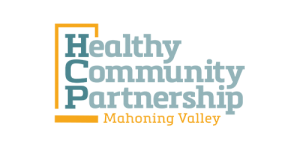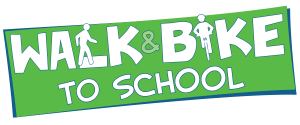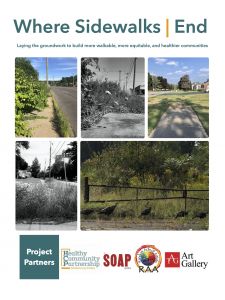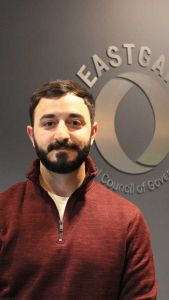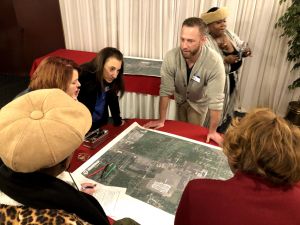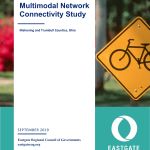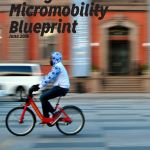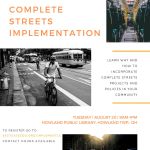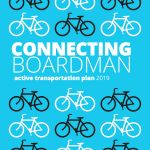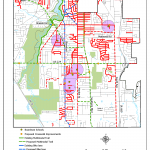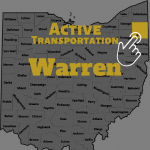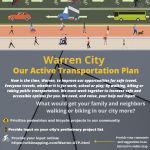Walking On: The Mahoning Valley’s Journey towards Becoming a More Walkable Region
Throughout 2019, the Mahoning Valley was buzzing with activities promoting the benefits of creating more walkable, more connected, healthier communities throughout the region.
In May, as flowers began to bloom, so too did events and activities celebrating walking and biking in Mahoning Valley. In connection with National Walk and Bike to School Day, events were organized in Boardman Township (Robinwood Lane Elementary School), Warren City (Jefferson K-8 School), and Youngstown (Williamson and Taft Elementary Schools) to promote the physical and mental health benefits of walking and biking to school. Over all, over 250 students participated.
The momentum rolled on into the summer. In August, Eastgate Regional Council of Governments and the Healthy Community Partnership hosted the Ohio Department of Transportation’s Active Transportation Academy for two workshops: Advocating for Active Transportation and Implementing Complete Streets Policies. Walk Youngstown (now rebranded as Walk the Valley) launched a sign installation campaign highlighting walkable routes through the downtown and near north and westside neighborhoods in Youngstown and kicked-off the creation of the Walk Wednesdays walking group; Where Sidewalks End, a regional art as activism exhibition raising awareness and calling for action to create more walkable, equitable, and healthier communities had their first of three gallery openings and a community engagement event with the City Club of the Mahoning Valley (listen to the discussion here); and several local news stories shared the importance—for businesses and residents—that sidewalks and walkability have in our communities.
Though these events have ended, their purpose and impact continues. In an attempt to capture the energy and urgency of these activities and initiatives, HCP has created the Where Sidewalks End Digital Digest that provides an overview of the purpose of the exhibition. This compilation also chronicles recent activities that continue to raise awareness and actions that have been taken by organizations and municipalities advancing policies and practices that promote pedestrian safety and walkability.
While last year saw these activities sprinting ahead towards becoming more pedestrian friendly communities, many individuals and organizations have been involved in the marathon for change long before and will remain involved long after these events to create, maintain, and sustain welcoming, walkable public spaces.
As HCP celebrates the release of the Where Sidewalks End digital digest, reflects on the miles we’ve travelled, and looks ahead to the next leg of the journey, we wanted to highlight some of the region’s shining stars that are guiding and leading the region to become more walkable, equitable, and healthier communities.
Justin Mondok— Planner / Eastgate Regional Council of Governments
Project Description(s): Planning for People Who Walk or Bike
Why is this project/initiative or active transportation more generally important to you/your community?
Multimodal transportation has been a topic that many of our local communities have expressed an interest in regarding the planning and implementation of infrastructure. To assist, Eastgate has worked to create tools and assemble data that can help these communities make transportation decisions that advance their goals related to improving the access to and the quality of bicycle and pedestrian infrastructure. Bicycle and pedestrian specific plans and studies, the integration of bike, pedestrian, and transit data into the agency’s other documents, and the creation of new programs that have an intentional focus on multimodal transportation have all provided new opportunities to create a multimodal vision for our local communities.
What progress have you seen towards becoming a more active/accessible community?
Through the Eastgate Planning Grant program, we have seen six communities develop a vision and strategy to improve multimodal transportation either community-wide or targeted to a specific corridor or district. These plans all represent a vision of a more active, healthy, and safe community.
What can each of us do to help move closer towards becoming a more active/accessible community?
Support projects that aim to improve conditions for walking, biking, or using transit. Communicate with you City or Village Councilperson or Township Trustee about investing in painting crosswalks, adding sidewalks, safe infrastructure for bicycling, and any other project idea that would make it safer for everyone to navigate our streets. If you want to have these discussions at the regional level, Eastgate has a Citizens Advisory Board that you can become a member of to directly shape our agency’s work.
Tricia D’Avignon— Assistant Director of Zoning & Development / Boardman Township
Project Description(s): School Travel Plan and Connecting Boardman Active Transportation Plan-Overall plan to improve walking and biking in Boardman Township. Boardman Township Zoning Code update 2020- updated standards requiring new development to install sidewalks where there are gaps, missing sidewalks, or where the townships active transportation plan has a strategic plan in place for the area for multimodal connection.
Why is this project/initiative or active transportation more generally important to you/your community?
As a suburb that is generally built out and has major high speed roads (owned and operated by the state and county) bisecting the township it is generally known as a traffic nightmare, but also seen as place that you can’t really get around in without a car. However, one of the most highly travelled WRTA transit lines runs through the center of the township and recently received a grant for a Transit-oriented development study along Market St. which is hopeful. In the past developers rather than opting for a reduced front yard setback decided to set new housing back further from the road rather than build sidewalks in the newer developments leaving a majority of the township lacking sidewalks.
What progress have you seen towards becoming a more active/accessible community?
We have had success in getting multiple new development and redevelopment projects to install sidewalks by telling them it would be required. WRTA recently received a grant for a TOD study along Market St. which was something we had included as a desire in our Connecting Boardman ATP.
If you haven’t seen progress yet, what is getting in the way?
Challenges have been making progress on roads that are controlled by ODOT and Mahoning County. There also needs to be more funding and support for active transportation projects and cross sector collaboration.
What can each of us do to help move closer towards becoming a more active/accessible community?
We found the best way we could to get what we wanted by including requirements in our zoning code because it is the foundation of re-development in the township. Even if we get sidewalks in a piecemeal fashion overtime we’re still working towards that larger goal of a connected network. This helps also shift the initial upfront costs from the taxpayer dollars to the developers.
Kris Kriebel—Health Educator and CHC Coordinator/ Trumbull County Combined Health District
Project Description(s): Ohio Action Institute Active Transportation Plan for Warren City
Why is this project/initiative or active transportation more generally important to you/your community?
The Active Transportation Plan outlines the vision, goals and strategies needed to support increased walking, bicycling and other active modes of transportation. With active transportation there are multiple benefits that it brings to the community. From improving our general well-being by increasing opportunities for physical activity, reducing the amount of pollutants and saving valuable green space. To the social benefits and economic benefits of improving connectivity of the community, saving on the wear and tear of our roads and the personal costs of purchasing and maintaining a motor vehicle. All of these benefits are why having an active transportation plan and implementing that plan are so important to the health of our community.
What progress have you seen towards becoming a more active/accessible community?
I have seen progress in the community with the new bus routes through WRTA, improvements to some of our bicycle and pedestrian infrastructure and the participation of the community in helping to create a plan that will benefit us all. This progress does not stop here as there is much more that needs done to make our community active and accessible. With an increased awareness and so many advocates within the community, my hope is that these improvements will happen sooner rather than later.
What can each of us do to help move closer towards becoming a more active/accessible community?
The best way that all of us can move closer towards a more active and accessible community is letting your voice be heard and not taking no for an answer. Advocating for the changes that you want to see, speaking to local officials on how you want your community to look, partnering with local organizations and volunteering your time.
Follow Warren City Active Transportation on Facebook for more information!
- Eastgate Multimodal Connectivity Study
- Youngstown Micromobility Blueprint
- Struthers Placemaking and Connectivity Feasibility Study
- Niles-Cortland Road Alternative Transportation Plan
- ODOT Active Transportation Academy Complete Streets Implementation Workshop
- ODOT Active Transportation Academy Advocating for Active Transportation Workshop
- Connecting Boardman Active Transportation Plan
- Walkable Boardman Map
- Boardman Active Transportation Map
- Warren Active Transportation Plan
- Warren Active Transportation Plan
- Warren Active Transportation Plan Map
